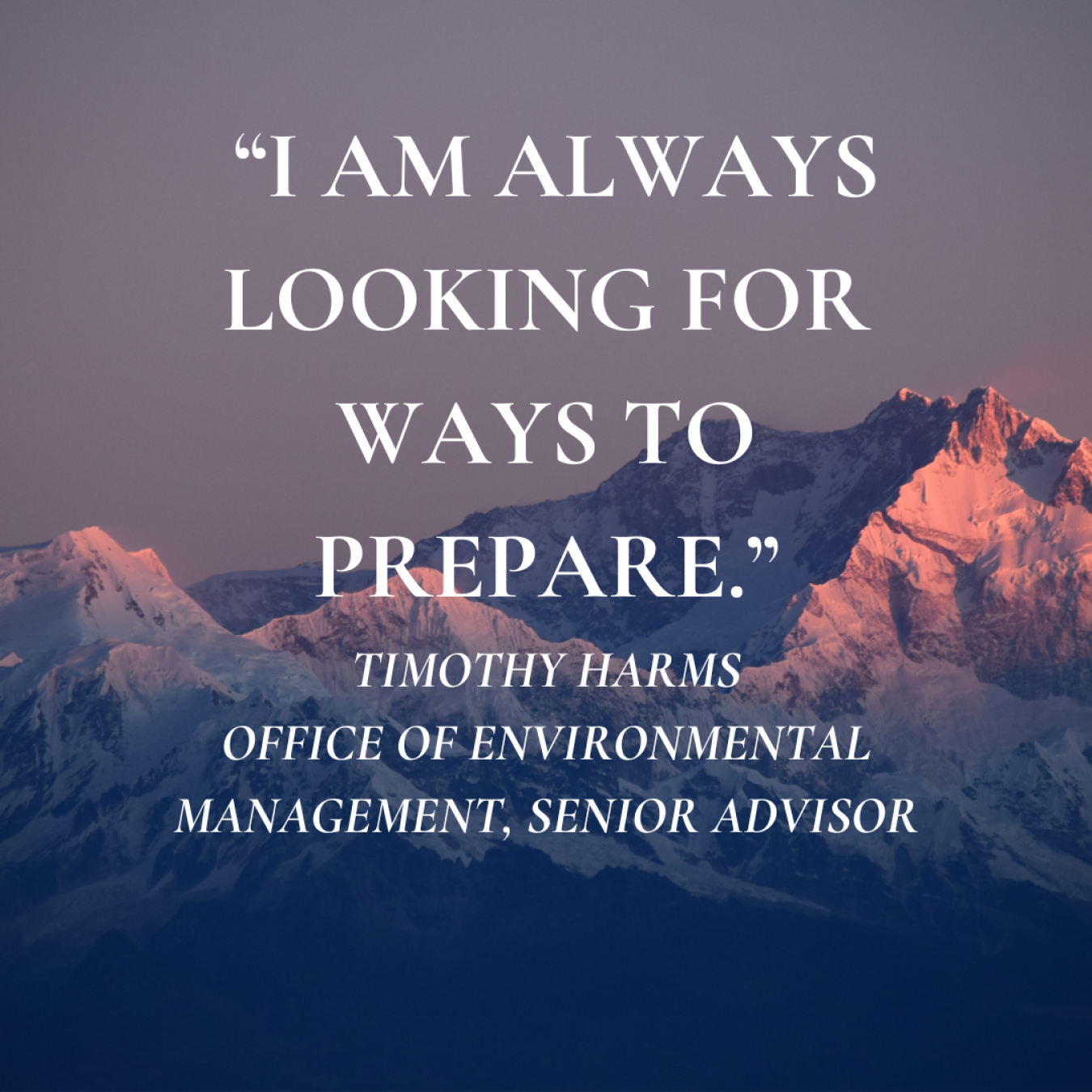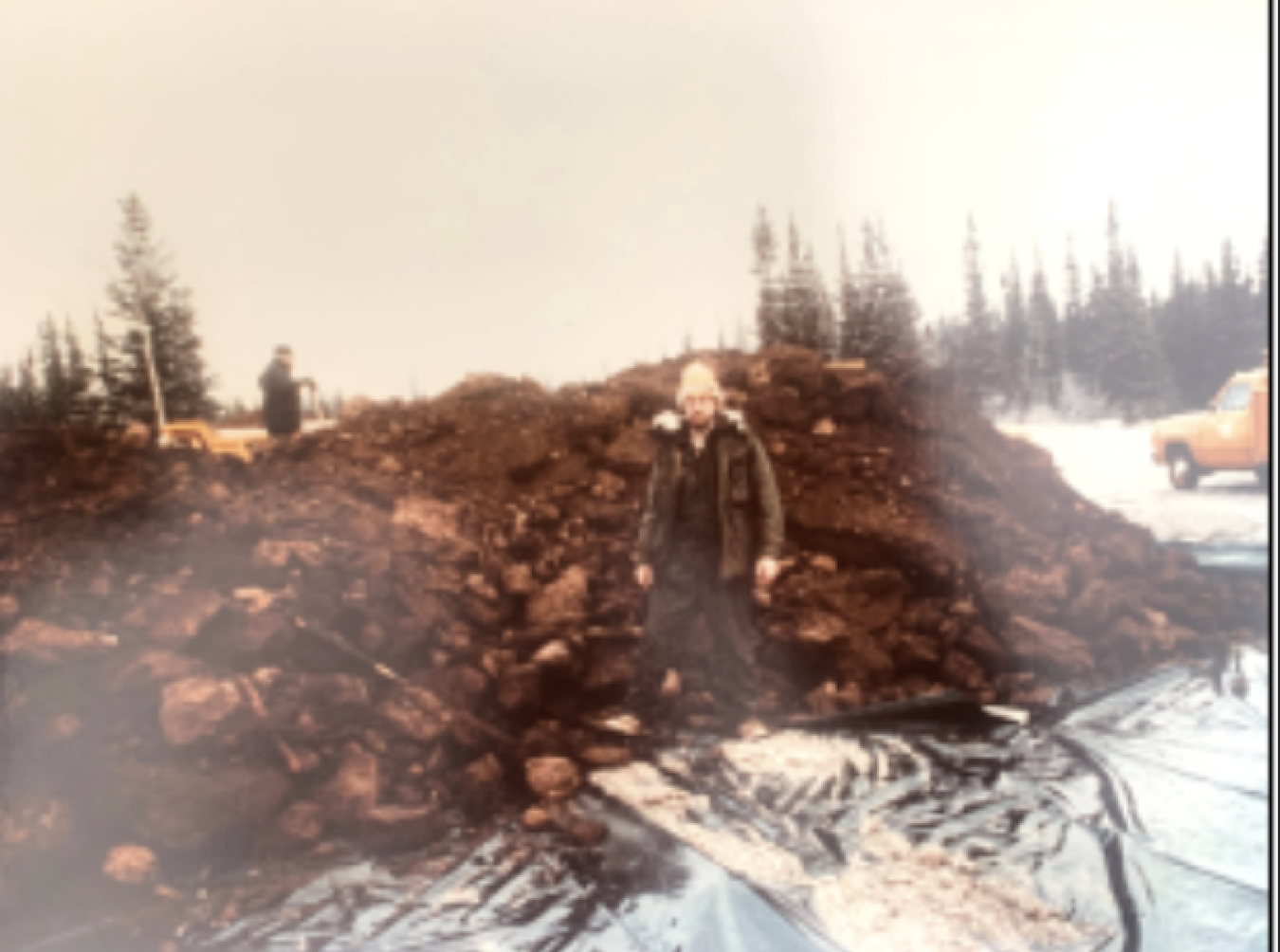Meet Timothy Harms, a senior advisor for the Environmental Management Office who spent time in Fort Greely, Alaska as an army civilian before transitioning to a career in hazardous waste policy at DOE.
May 13, 2024
The Arctic Energy Office is hosting a series of interviews to highlight the lives and achievements of some of DOE’s outstanding employees with Arctic and Alaska connections. Today meet Timothy Harms, a senior advisor for the Environmental Management Office who spent time in Fort Greely, Alaska as an army civilian before transitioning to a career in hazardous waste policy at DOE. If you're a Department of Energy employee and have Alaska connections or know someone at DOE who does, please connect at [email protected] so we can feature you in future editions.
Tell us about your experiences in the Arctic. What were some of your favorite memories from that time?
I have lots of memories of Alaska, but one of the more enduring ones is from when I first saw the aurora. The people I worked with at the time had been there for a while and kept talking about the aurora. Then when I went home that night, I got out of my pick-up truck, looked up to the sky and there was the aurora. It was forty below that night and my hood fell off my head, but I was so entranced by the aurora that I didn’t recognize how cold I was.
Another time, while driving a government vehicle somewhere remote, the truck broke down. I realized I had no survival-pack and it was seventy-five below, so I start walking ten miles to nearest building. By the time I got to the back of the truck I zipped my parka all the way up but was still cold. I only had on blue jeans for my legs, no long johns. Then another truck came by and picked me up. Alaska state law at the time at said that if it was 40 below and you leave person on the road its manslaughter - those people saved my life.

When did you live in Alaska?
I was active duty in the army in Denver, Colorado in the 70s, and after Vietnam, I started looking for other jobs. I am an environmental engineer, so I had been doing environmental surveys of army facilities in Alaska, one of which was Fort Greely. When I got to the fort and found out they were without an environmental specialist, I mentioned that I was looking for a job and got interviewed and hired on spot for an army civilian job just south of Delta Junction, a mid-sized Alaskan town with about 1000 people. I only worked in Alaska for a short period of time.
When I was up in Alaska, I got an emergency phone call from the Pentagon about paperwork and that I could stay in the Army, but I decided to leave anyway and moved to Alaska. It was a really good choice for me. Looking back on it my time in Alaska was great. It was difficult, but a lot of fun too.
When did you start working at the Department of Energy?
June 15, 1986. I started doing environment policy on hazardous waste with the Environmental Protection Agency, where part of what I did was help define hazardous waste. At one point I even went to Coal Island.
Why did you want to work at the DOE?
When I worked at the Pentagon as an Army civilian, there was a time when they were talking about reducing the number of staff. I thought I might get cut because I was the lowest grade person in the office. That was when I started looking for other jobs and saw three open at DOE, so I interviewed and was accepted for all of them but picked the hazardous waste policy job. At the time, DOE was known for having bad environmental policy, so I saw this as an opportunity to change that and make a difference. I love the mission itself. It’s something that needs to be done, and it’s something that I can work on and support. I know what I’m doing will have an impact.
What do you do now at DOE?
I still work in hazardous waste policy. I had that first job for about 4 years then went to Office of New Production Reactors, which lasted less than two years, before going to the Environmental Management (EM) Office where I am now. EM is responsible for the cleanup of radioactive waste and is the largest environmental clean-up program in the world. Now I work as a Senior Advisor for the environmental clean-up at EM, doing every position up to and including field manager. I have been to all EM clean-up sites across the country. I have also worked as the acting director of the EM Consolidated Business Center, and as the Director of Security directly reporting to the Under Secretary of Energy.
How did your time in the Arctic shape who you are today?
Up in Alaska people don’t care what other people look like. They care if the person is going to be a burden to them in an emergency, because with the weather in the wintertime people die. It’s not often, but it happens more than it should. I learned to be resilient and rely on myself so I can help others. If I’m taking care of myself that means I’ll be able to help others. It’s kind of like when you’re on an airplane and they say to put the air mask on you first before others. When I came to Alaska, I recognized that and people up there do help everyone else, but only if they are willing to help themselves first.
How does your time in the Arctic impact your perspectives at DOE?
Because Alaska is so big with such a harsh environment, I learned actions have consequences and how to be prepared for different scenarios. You have to prepare to take a hit so when something bad happens so you can adjust. I took that concept and made it a part of me, so I am always looking for ways to prepare for the worst and think of solutions.
What’s your favorite place in Alaska?
The mountains. The mountains up there are just so dramatic, particularly in contrast to the glacial rivers that come off of them. The view is so incredible – every day when I went to work, I could see Mount Hayes which was about 50 miles away. I loved it. I had to drive over the pipeline about four times a day and saw it each time. It was just indescribable. I’m an engineer, not a writer, so I just can’t do it justice.

